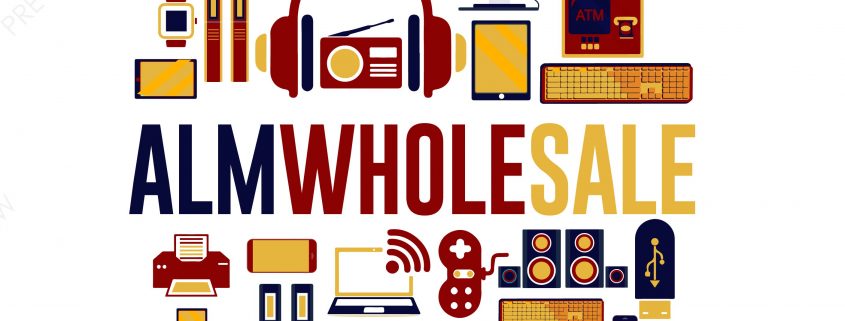This Month In Tech History
Atari Launches Home Video Gaming.

October 14, 1977
Atari releases their Video Computer System (known as the VCS and later as the Atari 2600). It took two years for the VCS to gain traction, but by 1979 it was the best selling gift of the Christmas season. Once it was established, the Atari VCS took the market by storm, popularised home video gaming, and helped cement the video game movement into mainstream culture, in our latest short blog we look back at the phenomenon that was the Atari.
Atari SA is a French corporate and brand name owned by several entities since its inception in 1972, currently by Atari Interactive, a subsidiary of the French publisher Atari, SA.The original Atari, Inc., founded in Sunnyvale, California in 1972 by Nolan Bushnell and Ted Dabney, was a pioneer in arcade games, home video game consoles, and home computers. The company’s products, such as Pong and the Atari 2600, helped define the electronic entertainment industry from the 1970s to the mid-1980s.
In 1973, Atari secretly spawned a competitor called Kee Games, headed by Nolan’s next door neighbour Joe Keenan, to circumvent pinball distributors’ insistence on exclusive distribution deals; both Atari and Kee could market virtually the same game to different distributors, each getting an “exclusive” deal. Joe Keenan’s management of the subsidiary led to him being promoted president of Atari that same year
In 1976, Bushnell, through Grass Valley, CA firm Cyan Engineering, started development of a flexible console that was capable of playing the four existing Atari games. The result was the Atari Video Computer System, or VCS (later renamed 2600 when the 5200 was released). The introductory price of $199 (equivalent to $856 in 2017) included a console, two joysticks, a pair of paddles, and the Combat game cartridge. Bushnell knew he had another potential hit on his hands but bringing the machine to market would be extremely expensive. Looking for outside investors, Bushnell sold Atari to Warner Communications in 1976 for an estimated $28–32 million, using part of the money to buy the Folgers Mansion. Nolan continued to have disagreements with Warner Management over the direction of the company, the discontinuation of the pinball division, and most importantly, the notion of discontinuing the 2600. In 1978, Kee Games was disbanded. In December of that year, Nolan Bushnell was fired following an argument with Manny Gerard. “[W]e started fighting like cats and dogs. And then the wheels came off that fall. Warner claimed they fired me,” recalled Bushnell. “I say I quit. It was a mutual separation.”
Development of a successor to the 2600 started as soon as it shipped. The original team estimated the 2600 had a lifespan of about three years; it then set forth to build the most powerful machine possible within that time frame. Mid-way into their effort the home computer revolution took off, leading to the addition of a keyboard and features to produce the Atari 800 and its smaller sibling, the 400. The new machines had some success when they finally became available in quantity in 1980. From this platform Atari released their next-generation game console in 1982, the Atari 5200. It was unsuccessful due to incompatibility with the 2600 game library, a small quantity of dedicated games, and notoriously unreliable controllers.
1980s as interference from the New York-based Warner management increasingly affected daily operations. Its home computer, video game console, and arcade divisions operated independently and rarely cooperated. Faced with fierce competition and price wars in the game console and home computer markets, Atari was never able to duplicate the success of the 2600.
These problems were followed by the video game crash of 1983, with losses that totalled more than $500 million. Warner’s stock price slid from $60 to $20, and the company began searching for a buyer for its troubled division.
In 1984, as a result of the video game crash of 1983, the original Atari Inc. was split, and the arcade division was turned into Atari Games Inc. Atari Games received the rights to use the logo and brand name with appended text “Games” on arcade games, as well as rights to the original 1972–1984 arcade hardware properties. The Atari Consumer Electronics Division properties were in turn sold to Jack Tramiel’s Tramel Technology Ltd., which then renamed itself to Atari Corporation.
In 1996, Atari Corporation reverse-merged with disk-drive manufacturer JT Storage (JTS),becoming a division within the company. In 1998, Hasbro Interactive acquired all Atari Corporation related properties from JTS, creating a new subsidiary, Atari Interactive.
Infogrames Entertainment (IESA) bought Hasbro Interactive in 2001 and renamed it Infogrames Interactive, which intermittently published Atari branded titles. In 2003, it renamed the division Atari Interactive. Another IESA division, Infogrames Inc. (formerly GT Interactive]), changed its name to Atari Inc. the same year, licensing the Atari name and logo from its fellow subsidiary.
In October 2001, Infogrames (now Atari SA) announced that it was “reinventing” the Atari brand with the launch of three new games featuring a prominent Atari branding on their boxarts: Splashdown, MX Rider and TransWorld Surf. Infogrames used Atari as a brand name for games aimed at 18–34 year olds. Other Infogrames games under the Atari name included V-Rally 3, Neverwinter Nights, Stuntman and Enter the Matrix.
On May 7, 2003, Infogrames had its majority-owned, but discrete US subsidiary Infogrames NA officially renamed Atari, Inc. renamed its European operations to Atari Europe but kept the original name of the main company Infogrames Entertainment. The original Atari holdings division purchased from Hasbro, Hasbro Interactive, was also made a separate corporate entity renamed as Atari Interactive.
On March 6, 2008, Infogrames made an offer to Atari Inc. to buy out all remaining public shares for a value of $1.68 per share, or $11 million total. The offer would make Infogrames sole owner of Atari Inc., thus making it a privately held company. On April 30, 2008, Atari Inc. announced its intentions to accept Infogrames’ buyout offer and to merge with Infogrames. On October 8, 2008, Infogrames completed its acquisition of Atari Inc., making it a wholly owned subsidiary
On December 9, 2008, Atari announced that it had acquired Cryptic Studios, a MMORPG developer.
Namco Bandai purchased a 34% stake in Atari Europe on May 14, 2009, paving the way for its acquisition from Infogrames. Atari had significant financial issues for several years prior, with losses in the tens of millions since 2005.
In May 2009, Infogrames Entertainment SA, the parent company of Atari, and Atari Interactive, announced it would change its name to Atari SA.
In April 2010, Atari SA board member and former CEO David Gardner resigned. Original Atari co-founder Nolan Bushnell joined the board as a representative for Blubay holdings.
As of March 31, 2011, the board of directors consisted of Frank Dangeard, Jim Wilson, Tom Virden, Gene Davis and Alexandra Fichelson
On January 21, 2013, the four related companies Atari, Atari Interactive, Humongous, and California US Holdings filed for Chapter 11 bankruptcy in the United States Bankruptcy Court for the Southern District of New York. All three Ataris emerged from bankruptcy one year later and the entering of the social casino gaming industry with Atari Casino.Frederic Chesnais, who now heads all three companies, stated that their entire operations consist of a staff of 10 people.
On June 22, 2014, Atari announced a new corporate strategy that would include a focus on “new audiences”, specifically “LGBT, social casinos, real-money gambling, and YouTube”
On June 8, 2017 a short teaser video was released, promoting a new product; and the following week CEO Fred Chesnais confirmed the company was developing a new games console – the hardware was stated to be based on PC technology, and still under development. In mid July 2017 an Atari press release confirmed the existence of the aforementioned new hardware, referred to as the Ataribox. The box design was derived from early Atari designs (e.g. 2600) with a ribbed top surface, and a rise at the back of the console; two versions were announced: one with a traditional wood veneer front, and the other with a glass front. Connectivity options were revealed, including HDMI, USB (x4), and SD card – the console was said to support both classic and current games.Also, according to an official company statement of June 22, 2017, the product was to be initially launched via a crowdfunding campaign in order to minimize any financial risk to the parent company
On September 26, 2017, Atari sent out a press release about the new “Atari VCS”, which confirmed more details about the console. It will run a Linux operating system, with full access to the underlying OS, but it will have a custom interface designed for the TV.
Did you own the original Atari ?
Blog was completed by ALM Wholesale LTD.




Trackbacks & Pingbacks
academic dissertation help https://helpon-doctoral-dissertations.net/
dissertation writing plan https://dissertations-writing.org/
dissertation help in new york https://mydissertationwritinghelp.com/
dissertation help service my https://help-with-dissertations.com/
master’s degree dissertation https://dissertationwriting-service.com/
how to write a dissertation proposal https://buydissertationhelp.com/
deep dish western slots https://slotmachinegameinfo.com/
harts of gold free slots https://www-slotmachines.com/
ashbringer relic slots https://411slotmachine.com/
zelda inventory slots https://download-slot-machines.com/
omg fortune free slots https://beat-slot-machines.com/
exosuit cargo slots https://slot-machine-sale.com/
harts of gold free slots https://slotmachinesworld.com/
free slots/penny https://pennyslotmachines.org/
free triple diamond slots https://candylandslotmachine.com/
vagas slots https://freeonlneslotmachine.com/
slots blaze casino https://2-free-slots.com/
gay teen dating sites https://speedgaydate.com/
free xxx gay chat rooms https://gay-buddies.com/
gay mens chat https://gaytgpost.com/
whats the best sith for findina a gay dating site for women https://gaypridee.com/
chat gay quereetaro https://bjsgaychatroom.info/
3sickening
Comments are closed.